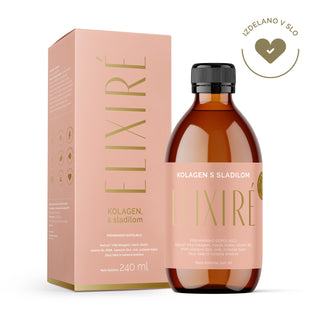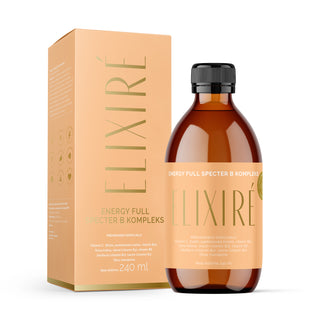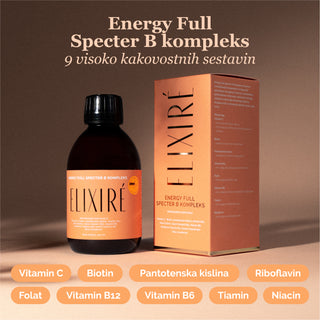After greater stress on the body – such as illness, treatment, or period of stress – many face an unexpected side effect: hair lossIf you notice that your hair is thinner, thinner, or breaks easily after an illness, you are not alone.
At Elixiré, we believe that hair is more than just aesthetics – it’s part of your identity and self-confidence. That’s why we’ve put together a guide with gentle yet effective tips to help you restores hair after illness and a return to natural vitality.
Why does hair loss occur after illness?
After illness, the body often switches into recovery mode, where prioritizes vital functions, while others – such as hair growth – are temporarily slowed down. This phenomenon is known as telogen effluvium, it is usual temporary and appears 2–3 months after the illness, lasting from a few weeks to several months. (1*)
The most common triggers are:
- COVID-19 (2*)
- Chemotherapy and oncology treatments (3*)
- Flu or high fever (4*)
- Prolonged antibiotic therapy (5*)
- Surgeries and major surgical procedures (6*)
- Stress, traumatic events, loss (6*)
- Nutrient deficiency (iron, zinc, B vitamins) (7*)
The most important advice? Don't panic!
The vast majority of dropouts after illness are renewable. Hair follicles stay alive – they just need time, nutrients and gentle encouragementto enter the growth phase again.
The keyword is: patience.
By gently supporting your body, you can help your hair come back to life in all its full strength.
7 tips for restoring hair after illness or treatment
1. Stress under control
The body needs rest after Covid or chemotherapy. Stress affects hormones and directly inhibits hair growth. Make sure you get enough sleep, include gentle movement (yoga, stretching, walks) and take time for yourself every day - without feeling guilty.
2. New hairstyle = new energy
Shortened hair not only eases the transition period, but also visually adds texture and volume.A hairdresser can advise you on the hairstyle that will best hide thinning hair and accentuate your facial features.
3. A gentle approach to washing
Hair is more fragile after illness. Wash it with lukewarm water., use a sulfate-free shampoo and always apply conditioner. Don't rub them with a towel – gently pat them dry and comb them with a wide-tooth comb.
4. Say no to heat
During this period, avoid flat irons, curling irons, and heat blow-drying. If you must use heat tools, always use a protective serum.
5. Protection at night
While sleeping, our hair often rubs against the pillow, which causes breakage. Try sleeping on a silk sheet or gently wrap your hair in a soft scarf. You can apply a lightweight leave-in conditioner before bed.
6. Add nutrients from within
After illness, the body needs balance, restoration and additional support..A balanced diet and adequate intake of nutrients such as B vitamins, zinc, biotin and collagen, can be part of your holistic routine for well-being and a more beautiful appearance.
Elixré recommendation:
Elixré Collagen with MSM, Q10 and Vitamin C
– Contains marine collagen Naticol®, popular in beauty care to support hair, skin and nails
– With an addition vitamin C, which contributes to the formation of collagen for the normal functioning of the skin
– Enriched with biotin and zinc, which contribute to maintaining healthy hair
View the product → COLLAGEN with coenzyme Q10, white and yellow peach flavor
7. Targeted scalp care for new growth
Internal support alone is not enough for hair growth – scalp care is also key. If this is in balance, the hair follicles receive enough oxygen and nutrients. When talking about hair recovery after illness, scalp care plays a key role. A balanced and nourished scalp supports an environment in which hair can grow stronger and more vital.
Elixré solution for daily care:
Elixré Power Growth Hair Serum
– Contains carefully selected ingredients:
• AnaGain™ (from organic pea shoots)
• Capixyl™ (red clover and peptide complex)
– Enriched with rosemary hydrolate, birch sap, MSM and caffeine
– Suitable for women and men as part of regular scalp care
– For daily use as part of a care routine after stress, illness or hormonal changes
View product → Power Growth Hair - scalp serum
What if there is no improvement after 6–9 months?
If after this period your hair is still falling out excessively or is not growing back, consult a dermatologist or trichologist. It is possible that it is a hormonal imbalance, autoimmune response or deficiency of certain nutrientsthat require a professional approach.
Hair restoration after Covid or chemotherapy is not a beauty contest - it's a healing process. Every strand that grows back is proof that your body is recovering.
Literature: (1*)
- Source: Telogen Effluvium – a review of the science and current obstacles, (GO Chien Yin, JL Siong-See, E. C.E. Wang), https://www.sciencedirect.com/science/article/abs/pii/S0923181121000086
- Source: Telogen effluvium associated with COVID‐19 infection, (H. Olds, J. Liu, K. Luk, HW Lim, D. Ozog, PV Rambhatla), https://pmc.ncbi.nlm.nih.gov/articles/PMC7883200/
- Source: Chemotherapy, oestrogens and hair loss, (British Journal of Dermatology), https://academic.oup.com/bjd/article-abstract/170/3/493/6614751
- Source: Telogen Effluvium, (D. Liyanage, R. Sinclair), https://www.mdpi.com/2079-9284/3/2/13
- Source: Medication-induced hair loss: An update, (L. Alhanshali, M. Buontempo, J. Shapiro, K.Lo Sicco), https://www.jaad.org/article/S0190-9622%2823%2900719-3/fulltext
- Source: Telogen Effluvium: A Guide to Temporary Hair Loss, (The international society of hair restoration surgery), https://ishrs.org/telogen-effluvium/
- Source: The Role of Vitamins and Minerals in Hair Loss:
A Review, ( HM Almohanna, AA Ahmed, JP Tsatalis, A. Tosti), https://pubmed.ncbi.nlm.nih.gov/30547302/








